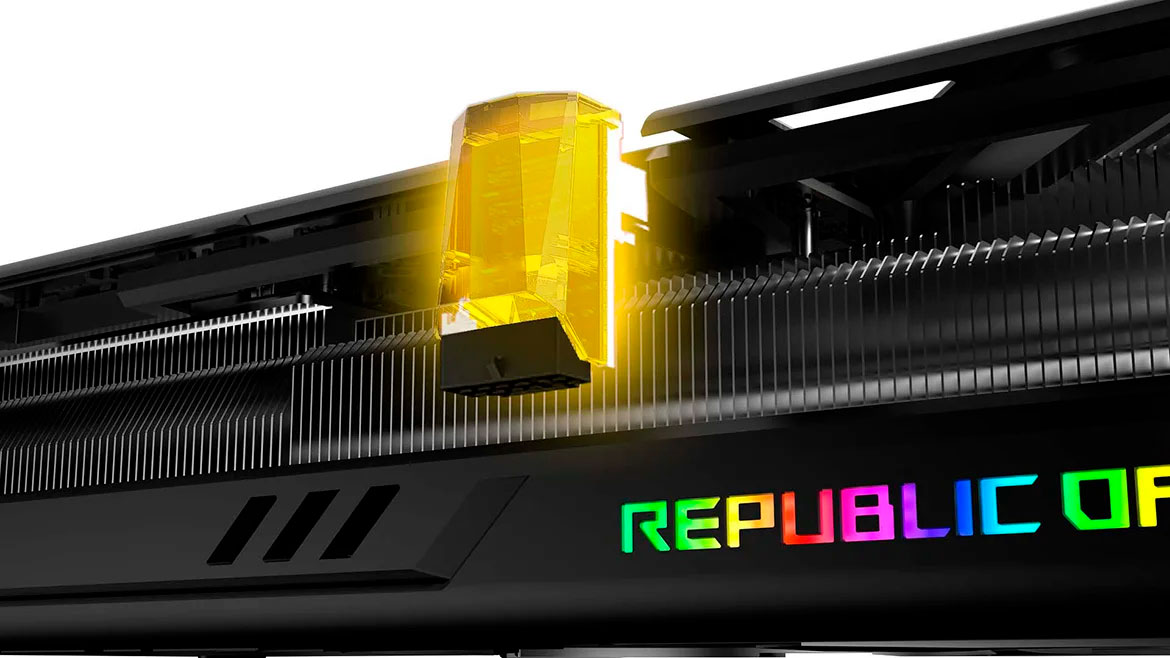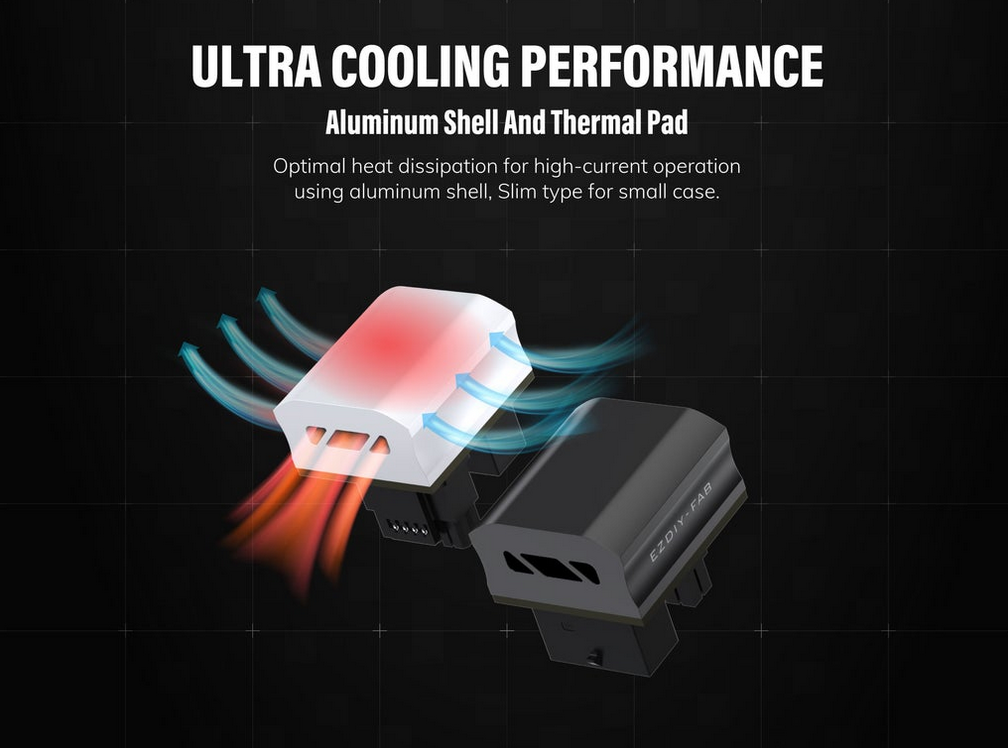12VHPWR adapters sporting heatsinks and thermal pads show how problematic the connector is
Going the extra mile to ensure the adapter doesn't melt.

The 12VHPWR connector (and its 12V-2x6 successor) is notorious for their vulnerability to high temperatures on power-hungry GPUs, to the point where it can melt. To combat this on the adapter side, third-party manufacturers such as Ezdiy-fab and Cablemod have been forced to resort to "exotic" solutions sporting copper PCBs, thermal pads, and aluminum heatsinks to ensure their adapters stay cool.
Ezdiy-fab's 90- and 180-degree adapters take advantage of a 2oz copper PCB strapped to a thermal pad and aluminum heatsink cover. The copper PCB allegedly keeps the voltage impedance low while the thermal pad and heatsink on top of it ensure cool operation. CableMod's latest adapter uses the same design but takes advantage of a copper foil applied to its copper PCBs, in addition to a thermal pad and aluminum heatsink.


All of this additional cooling shows how fragile the new 16-pin connectors are to potential overheating. Virtually all current 16-pin adapters we could find (from various third-party makers) take advantage of some cooling system. By contrast, you can find angled 8-pin adapters that don't come with any fancy cooling gizmos (some do, but the point is that cooling components on 8-pin adapters don't seem to be required.) You can find angled 8-pin adapters with a simple plastic shell, contributing almost nothing to cool the interior components.
Cablemod had to recall its original V1.0 adapters due to temperature problems associated with the connectors loosening unintentionally, a flaw in the original design. Even though the design flaw only affected 1% of units sold, the total amount of property damage was estimated to be over $74,500 thanks in no small part to the sky-high prices of flagship GPUs lately. The cable manufacturer replaced the original version with an updated model that rectified the adapter's previous issue.
Lately, there have been melting concerns regarding the new RTX 50-series that comes with the revised 12V-2x6 power connector. It has been discovered that using previous-generation 12VHPWR cables with the RTX 5090 can result in melting issues regardless. We saw this when the first recorded RTX 5090 16-pin connector meltdown was published by a Reddit user online, who used an old 12VHPWR third-party cable with his new GPU. The cable's maker came out with a statement, clarifying that only its cables that are made in 2025 using the newer 12V-2x6 standard support RTX 50 series GPUs. (Reminder: 12V-2x6 is backward compatible with 12VHPWR.)
Initially, it was thought that the melting problem was due to connection seating only, especially with the original 12VHPWR connectors. However, multiple theories have come out suggesting that the connector may be doomed to fail. One theory suggests that the 16-pin standard as a whole is pushed way too close to its physical limits. Another suggests improper load balancing between the wires is causing the connectors to fail as well due to a lack of shunt resistors on RTX 40 and RTX 50 series GPUs.
Regardless of where exactly the problem is, it's clear that the new 16-pin connector standard is far less robust than its 8-pin and 6-pin predecessors. Maybe at some point, Nvidia and the PCI SIG committee will make an entirely new connector with a new design. But for now, those "lucky" enough to snag a high-end Nvidia GPU will have to live with the 16-pin connector, flaws and all.
Get Tom's Hardware's best news and in-depth reviews, straight to your inbox.

Aaron Klotz is a contributing writer for Tom’s Hardware, covering news related to computer hardware such as CPUs, and graphics cards.
-
lmcnabney If the power is balanced 'perfectly' between the six +12V wires it means that 8.3 amps are running through each of those 16ga copper wires. There is a hard limit of 10 amps for 16ga for electrical standards in general. Using 8 pin PCIE cabling keeps the current down to 5.5 amps. The 16 pin connector was almost doomed to have a higher electrical failure rate. Stripping out overcurrent controls have only hastened it.Reply -
artk2219 Reply
Only a 20% margin of error with no current sensing or load balancing. You're right, this standard was destined to cause failures.lmcnabney said:If the power is balanced 'perfectly' between the six +12V wires it means that 8.3 amps are running through each of those 16ga copper wires. There is a hard limit of 10 amps for 16ga for electrical standards in general. Using 8 pin PCIE cabling keeps the current down to 5.5 amps. The 16 pin connector was almost doomed to have a higher electrical failure rate. Stripping out overcurrent controls have only hastened it. -
TJ Hooker Reply
No there isn't, where did you see that? E.g. with 90 C rated insulation the NEC rates 16 AWG copper for 18 amps.lmcnabney said:There is a hard limit of 10 amps for 16ga for electrical standards in general.
https://www.productinfo.schneider-electric.com/na-std-ref/viewer/5c0fee4b347bdf0001de4d55/5c0fee5b347bdf0001de4d6b/r/ConductorAmpacityBasedOnThe2017Nati-F20AB318 -
qxp There is a discussion on what users want in a new connector here:Reply
https://www.techpowerup.com/forums/threads/proposed-new-power-connector.332398/
Short summary: 48V, one wire for positive, one for ground, two sensing wires to tell whether power wires are overloading (so you don't have to reset fuses) and two data wires to talk to PSU. 48V could also be used to provide motherboard with power ready for USB-C connectors. -
vanadiel007 I will skip these and wait on the liquid cooled version of this connector, with 240 mm radiator and RGB fans.Reply -
redboy66 We should call things as they are, the problem is not the connector, the problem is not the cables, the problem is not the PSU.Reply
It is time for Nvidia to LOWER the consumption of its GPU -
TJ Hooker Reply
This is nearly identical to the 48VHPWR connector that was added the PCIe CEM spec along with 12VHPWR (although not used in any consumer products, AFAIK). To the point I think that guy may have just regurgitated what was in the spec as if he came up with it himself.qxp said:There is a discussion on what users want in a new connector here:
https://www.techpowerup.com/forums/threads/proposed-new-power-connector.332398/
Short summary: 48V, one wire for positive, one for ground, two sensing wires to tell whether power wires are overloading (so you don't have to reset fuses) and two data wires to talk to PSU. 48V could also be used to provide motherboard with power ready for USB-C connectors.
But yeah, moving to a higher voltage would certainly make it a lot easier to power high end cards. -
InvalidError Reply
Generic AWG tables intended for cables going through in-wall insulation or conduits with up to three current-carrying pairs per 1" bundle and a normal operating temperature limit of 60C.TJ Hooker said:No there isn't, where did you see that? E.g. with 90 C rated insulation the NEC rates 16 AWG copper for 18 amps.
Ventilated cabinets like PCs do not need wiring derated for in-wall insulation.